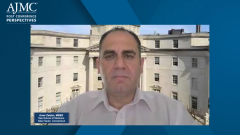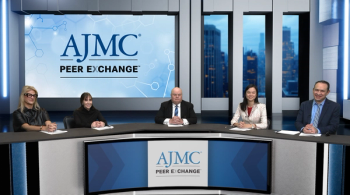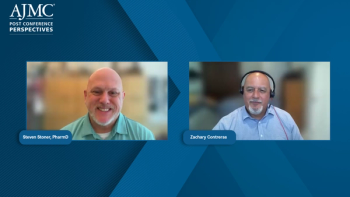
Intensive vs Lower-Intensity AML Treatment: A Propensity Score-Matched Analysis
A panelist discusses how a large propensity score–matched analysis of 1300 patients aged 60-75 found similar all-cause mortality between intensive chemotherapy and azacitidine plus venetoclax, but with lower adverse events in the azacitidine-venetoclax group, suggesting that treatment selection should be individualized based on patient fitness, genetic mutations, transplant candidacy, and patient preferences for time-limited vs continuous therapy, while emphasizing the need for prospective randomized trials to definitively guide treatment decisions in this age group.
Episodes in this series

A significant debate exists in AML treatment regarding optimal therapy selection for patients aged 60 to 75 years, specifically comparing intensive chemotherapy vs hypomethylating agents (HMA) plus venetoclax. Growing evidence suggests that patients receiving HMA combinations like decitabine or azacitidine with venetoclax can achieve transplant eligibility and potential cure with reduced toxicity compared to intensive chemotherapy. An ASCO abstract addressed this question through a large prospective retrospective propensity score–matched analysis using the global TriNetX database, examining patients aged 60 to 75 years who received either HMA-venetoclax or intensive chemotherapy between 2020 and 2023.
The study identified 1300 eligible patients, with approximately 366 receiving HMA-venetoclax treatment. Using Cox proportional hazard modeling and propensity score matching, researchers found no evidence of improved outcomes with intensive chemotherapy compared to HMA-venetoclax in this age group. All-cause mortality rates were similar between treatment approaches, but HMA-venetoclax demonstrated lower adverse event rates, suggesting preferential use of this regimen. These findings align with similar analyses conducted by other research groups using different databases, consistently showing no significant advantage for intensive chemotherapy over azacitidine-venetoclax in patients aged 60 to 75 years, particularly those who successfully transition to transplantation.
While these retrospective analyses provide valuable guidance for clinical discussions, treatment selection requires individualized patient assessment considering multiple factors. Key considerations include patient fitness level, genetic mutation profile, care goals, transplant candidacy, and treatment preference regarding time-limited intensive therapy vs indefinite HMA-venetoclax maintenance. Current retrospective adjusted analyses, though informative, have limitations that necessitate randomized prospective trials for definitive treatment recommendations. Several such trials are currently ongoing and will provide crucial evidence to better inform clinical decision-making regarding optimal treatment selection in this intermediate-age AML patient population.
Newsletter
Stay ahead of policy, cost, and value—subscribe to AJMC for expert insights at the intersection of clinical care and health economics.





























































